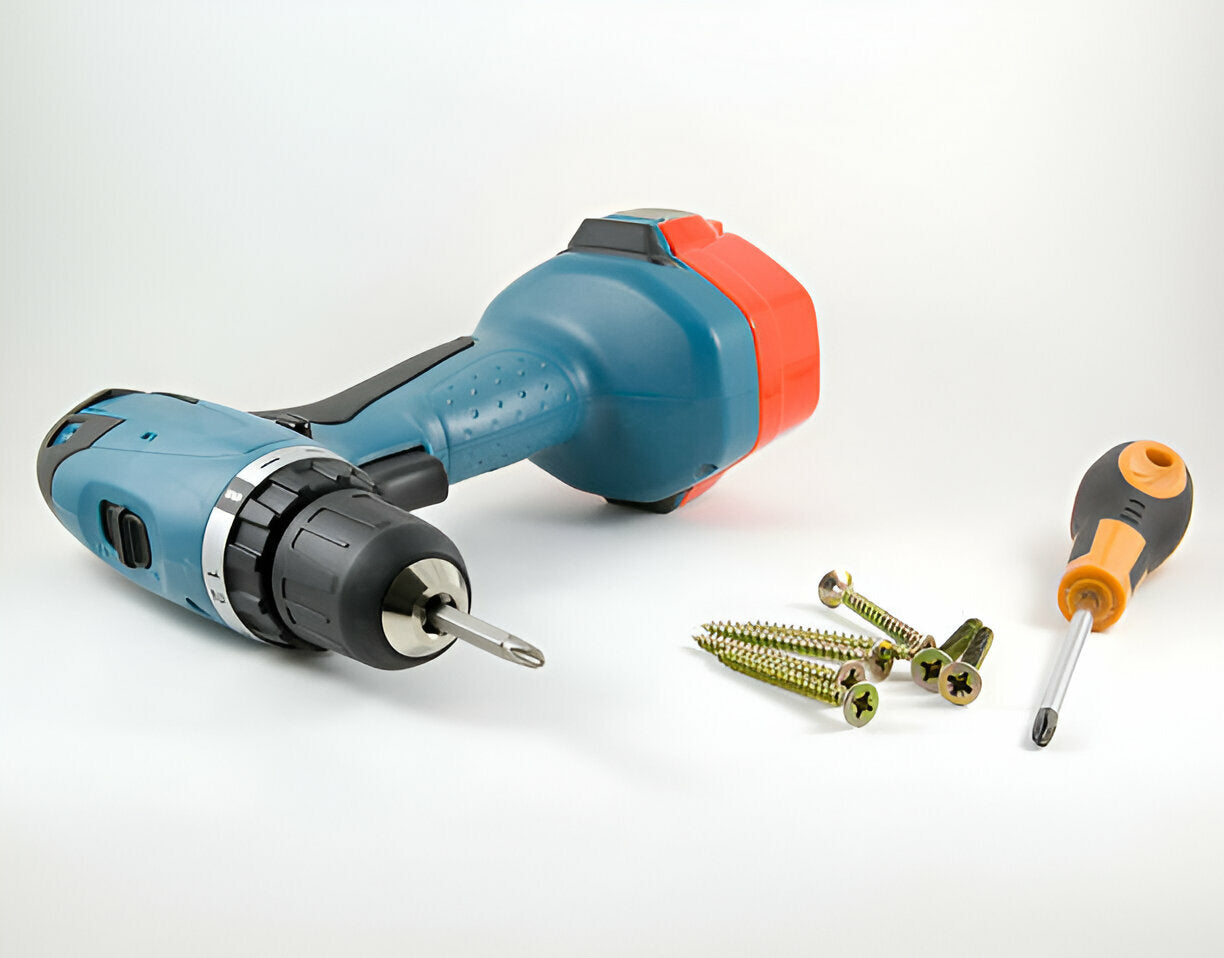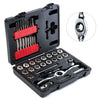
Maintaining Your Cordless Screwdriver: Tips for Longevity
The advent of cordless screwdrivers has marked a significant evolution in the world of DIY tools, offering unparalleled convenience and efficiency. These invaluable tools have become a staple across various sectors, from household DIY projects to professional hardware shop retail environments and even global manufacturing processes. With their portability and power, cordless screwdrivers streamline tasks that once required considerable time and manual effort.
They embody the innovative spirit of modern tool engineering, integrating sophisticated technology with user-friendly design to cater to a broad spectrum of needs. However, like all high-tech equipment, cordless screwdrivers require proper maintenance to ensure their longevity and reliability. This guide about Cordless Screwdrivers offers comprehensive advice on maintaining your cordless screwdriver, ensuring it remains a dependable part of your toolkit for years to come.
Understanding Your Cordless Screwdriver
A cordless screwdriver's life span significantly depends on the user's understanding of the tool's components and how they work together. This foundational knowledge is crucial for effective maintenance.
Components and Their Functions
- Battery Pack: The power source for the screwdriver, typically lithium-ion, which requires specific care.
- Motor: Converts electrical energy from the battery into mechanical action.
- Chuck and Bit Holder: The front part where screw bits are inserted and held during operations.
Reading the Manual
- Manufacturer’s Instructions: Offers specific maintenance tips tailored to your model.
- Warranty Information: Understand what practices may void your warranty.
Regular Usage Patterns
- Assessing Workload: Knowing the typical workload helps in anticipating wear and maintenance needs.
- Adaptation to Tasks: Using the tool within its capacity limits prevents overexertion and damage.
Cleaning Your Tool
Regular cleaning is essential to prevent build-up that can impair the function and longevity of your cordless screwdriver.
Post-Use Cleaning
- Wipe Down: Removing dust and debris after each use prevents accumulation.
- Soft Brushes and Air Blowers: Use these tools to clean hard-to-reach areas without opening the screwdriver.
Deep Cleaning
- Disassembling (If Applicable): Follow the manufacturer’s guide to safely remove parts for cleaning.
- Contact Cleaner for Electrical Parts: Apply as directed to maintain electrical conductivity and prevent corrosion.
Environment Considerations
- Storage: Keep your tool in a clean, dry place to prevent environmental damage.
- Avoid Moisture and Dust: These are primary enemies of electronic components.
Battery Maintenance
The battery is the heart of your cordless screwdriver; maintaining it is crucial for optimal performance and longevity.
Charging Practices
- Follow Manufacturer’s Guidelines: Overcharging or undercharging can degrade battery life.
- Use Correct Charger: Ensure compatibility to prevent damage.
Storage
- Optimal Charge Level: Storing batteries at a 40-60% charge level is recommended for extended periods.
- Temperature Control: Avoid extreme temperatures to prevent battery degradation.
Regular Checks
- Inspect for Damage: Look for signs of swelling, leakage, or other damages.
- Clean Contacts: Ensure the battery and tool contacts are clean for efficient power transfer.
Lubrication
Proper lubrication reduces friction in moving parts, prolonging the life of your cordless screwdriver.
Types of Lubricants
- Use Recommended Products: Specific lubricants are designed for electronic tools.
- Application Methods: Apply sparingly to avoid attracting dust.
Frequency of Lubrication
- Regular Inspection: Determine need based on usage frequency and environmental conditions.
- After Cleaning: A good practice is to lubricate after thorough cleaning sessions.
Points of Application
- Gears and Bearings: Focus on areas with high friction.
- Avoid Over-lubrication: Excess can attract dust and cause damage.
Inspecting for Wear and Damage
Regular inspection helps identify potential issues before they lead to failure.
Visual Inspection
- Check for Cracks and Breaks: Especially in the housing and around the chuck.
- Bit Condition: Worn bits can damage screws and affect performance.
Functional Checks
- Test Clutch Settings: Ensure variable torque settings are functioning correctly.
- Speed Adjustments: Test for smooth transition across different speeds.
Signs of Electrical Issues
- Unusual Noises or Smells: Can indicate motor or battery problems.
- Inconsistent Performance: Fluctuations in power could signal internal issues.
Updating Firmware
For models equipped with digital interfaces, keeping firmware updated ensures optimal performance and access to new features.
Checking for Updates
- Manufacturer’s Website: Regularly visit for update notifications.
- Automatic Notifications: If your tool supports it, enable automatic update alerts.
Installation Process
- Follow Detailed Instructions: Provided by the manufacturer to avoid errors.
- Backup Settings: If possible, before updating to prevent loss of personal configurations.
Benefits of Updates
- Improved Efficiency: Updates often enhance battery management and power optimization.
- New Features: Access to additional functionalities and improvements.
Professional Servicing
Certain maintenance tasks require professional expertise to ensure the screwdriver is serviced correctly without causing damage.
When to Seek Professional Help
- Complex Problems: Such as internal electrical issues.
- Warranty Considerations: Some repairs might need to be done by certified professionals to maintain the warranty.
Selecting a Service Provider
- Authorized Centers: Ensure that the service provider is recognized by the manufacturer.
- Check Reviews: Look for feedback on their service quality and customer satisfaction.
Keeping Records
- Service History: Maintain a log of services and repairs for future reference.
- Warranty Services: Note any services performed under warranty.
Avoiding Common Mistakes
Awareness of common pitfalls can prevent accidental damage to your cordless screwdriver.
Misuse of Tool
- Using as a Hammer: This can damage the internal components and the chuck.
- Overloading the Motor: Understand the tool’s limits to prevent burnout.
Neglecting Maintenance Cues
- Ignoring Warning Signs: Unusual noises or decreased performance are indicators that maintenance is needed.
- Skipping Regular Maintenance: Consistency is key to preventing larger issues.
Improper Storage
- Leaving Batteries in Extreme Conditions: Temperature affects battery health.
- Storing in Damp Environments: Moisture can corrode and damage sensitive components.
Future-Proofing Your Investment
Looking ahead and preparing for the future can maximize your cordless screwdriver’s lifespan and usability.
Staying Informed
- Technology Advances: Keep up with new developments in cordless tool technology.
- Upgradable Components: Consider tools with replaceable batteries and parts.
Planning for Replacement
- Lifecycle Management: Recognize when upgrading is more cost-effective than repairing.
- Recycling Programs: Participate in responsible disposal and recycling of old tools and batteries.
Final Thoughts
Maintaining your cordless screwdriver requires a proactive approach, blending regular care with an understanding of the tool's requirements and limitations. By adhering to these guidelines, you can ensure that your cordless screwdriver remains a reliable, efficient, and long-lasting component of your toolkit. Remember, the longevity of your tool not only depends on how you use it but also on how well you maintain it.
Through diligent maintenance and care, your cordless screwdriver can exceed expectations, becoming more than just a tool but a trustworthy companion in your crafting, repairing, and building endeavors. Whether you're a DIY enthusiast, a professional in the hardware shop retail sector, or involved in global manufacturing, the principles of proper tool maintenance remain the same. By fostering a deeper connection with your tools through regular maintenance, you're not only preserving their functionality but also enhancing your efficiency and the quality of your work.
Related Article: Innovations in Cordless Screwdriver Technology: What's New?



